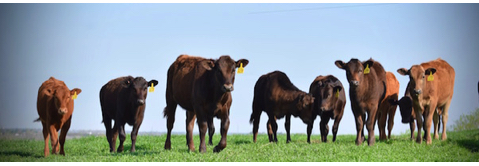Structural Advantages of Wagyu Cattle
“Wagyu are the most structurally amazing breed of cattle.” That might sound like a bit of hyperbole without knowing the qualifications and experience of the person who included that statement in his presentation to the assembled Wagyu exhibitors at the 2012 Houston Livestock Show.
With an undergraduate degree in Pre-Vet and Pre-Med, an M.S. in Reproductive Physiology, and 18 years of evaluating cattle traits for the world’s leader in bovine genetics, Eldon Clawson brings a unique perspective to the growing number of Wagyu breeders. He believes that because of the structural advantages he has observed, Wagyu move better, breed better, and are productive longer than any other breed. To understand how these traits developed, it’s helpful to know a little about their history.
Unlike other breeds that have been selected in a large part for appearance, Wagyu were bred to be functional. This multi-century trait selection for strength, stamina and agility has produced superior physical features, such as:
• Unequalled bone and ligament quality.
• Tremendous strength, a large chest, and a large rib eye area for their size.
• Longer chine bones and forelimb structure add to their strength; this allows for easier grazing.
• More flex to their joints and an ideal set to their legs, facilitating movement.
• Longer, wider shoulder blades allow ease of motion and aid strength, soundness, and agility.
• Hardest hooves of any breed reduce lameness issues.
In their native Japan, Wagyu were bred for working performance in various industries and for transportation. Due to religious taboos, their use for beef and dairy didn’t begin until 1868 when a major cultural shift took place during the Meiji restoration. As the sole domestic farm animal, their use in agriculture continued until about 1960, when mechanization and chemical fertilizer became more common.
There is genetic evidence to back up Mr. Clawson’s assertions that Wagyu are uniquely built. A research project conducted at Washington State University (Decker et. al. 2009) analyzed 54,000 DNA markers to assess the inter-relatedness of various cattle. While the prominent western breeds had a large degree of genetic similarity, Wagyu were literally in a class by themselves. This study provided the scientific underpinning to Mr. Clawson’s observations.
The high degree of intra-muscular fat, which gave the cattle the energy they needed for long days in the field or for pulling carts, has set Wagyu beef apart from any other. Knowing their structural advantages will make this unique breed even more attractive to the discerning cattleman who wants to profit from the growing demand for high quality beef.
